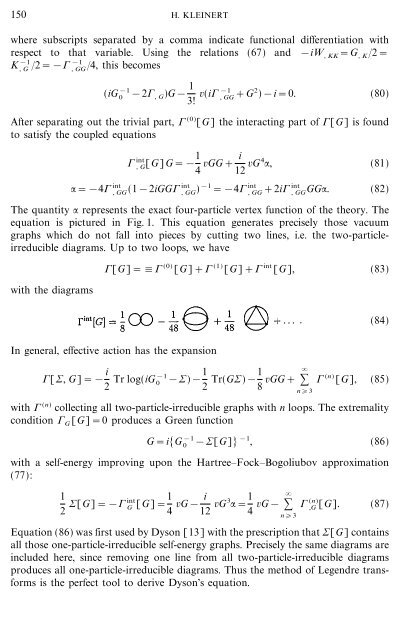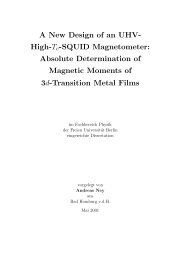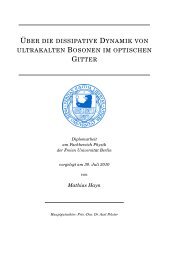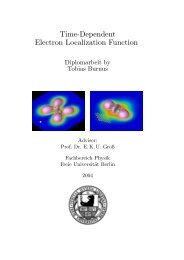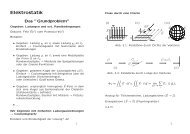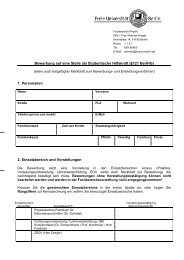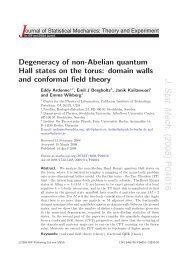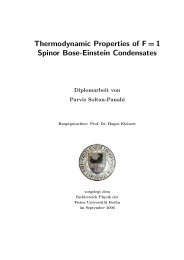ap online
ap online
ap online
Create successful ePaper yourself
Turn your PDF publications into a flip-book with our unique Google optimized e-Paper software.
150 H. KLEINERT<br />
where subscripts separated by a comma indicate functional differentiation with<br />
respect to that variable. Using the relations (67) and &iW , KK =G , K 2=<br />
4, this becomes<br />
K &1<br />
, G<br />
2=&1<br />
&1<br />
, GG<br />
(iG &1<br />
0<br />
&21 , G )G& 1 &1<br />
v(i1<br />
, GG<br />
3! +G2 )&i=0. (80)<br />
After separating out the trivial part, 1 (0) [G] the interacting part of 1[G] is found<br />
to satisfy the coupled equations<br />
1 int<br />
, G[G]G=& 1 4 vGG+ i<br />
12 vG4 :, (81)<br />
:=&41 int<br />
, GG(1&2iGG1 int<br />
, GG) &1 =&41 int<br />
, GG+2i1 int<br />
, GGGG:. (82)<br />
The quantity : represents the exact four-particle vertex function of the theory. The<br />
equation is pictured in Fig. 1. This equation generates precisely those vacuum<br />
gr<strong>ap</strong>hs which do not fall into pieces by cutting two lines, i.e. the two-particleirreducible<br />
diagrams. Up to two loops, we have<br />
with the diagrams<br />
1[G]=#1 (0) [G]+1 (1) [G]+1 int [G], (83)<br />
(84)<br />
In general, effective action has the expansion<br />
1[7, G]=& i 2<br />
Tr log(iG&1<br />
0<br />
&7)& 1 2 Tr(G7)&1 8 vGG+ : <br />
n3<br />
1 (n) [G], (85)<br />
with 1 (n) collecting all two-particle-irreducible gr<strong>ap</strong>hs with n loops. The extremality<br />
condition 1 G [G]=0 produces a Green function<br />
G=i[G &1<br />
0<br />
&7[G]] &1 , (86)<br />
with a self-energy improving upon the HartreeFockBogoliubov <strong>ap</strong>proximation<br />
(77):<br />
1<br />
int<br />
7[G]=&1<br />
G<br />
[G]= 1 2 4 vG& i<br />
12 vG3 := 1 <br />
4 vG& : 1 (n)<br />
,G<br />
[G]. (87)<br />
n3<br />
Equation (86) was first used by Dyson [13] with the prescription that 7[G] contains<br />
all those one-particle-irreducible self-energy gr<strong>ap</strong>hs. Precisely the same diagrams are<br />
included here, since removing one line from all two-particle-irreducible diagrams<br />
produces all one-particle-irreducible diagrams. Thus the method of Legendre transforms<br />
is the perfect tool to derive Dyson's equation.


